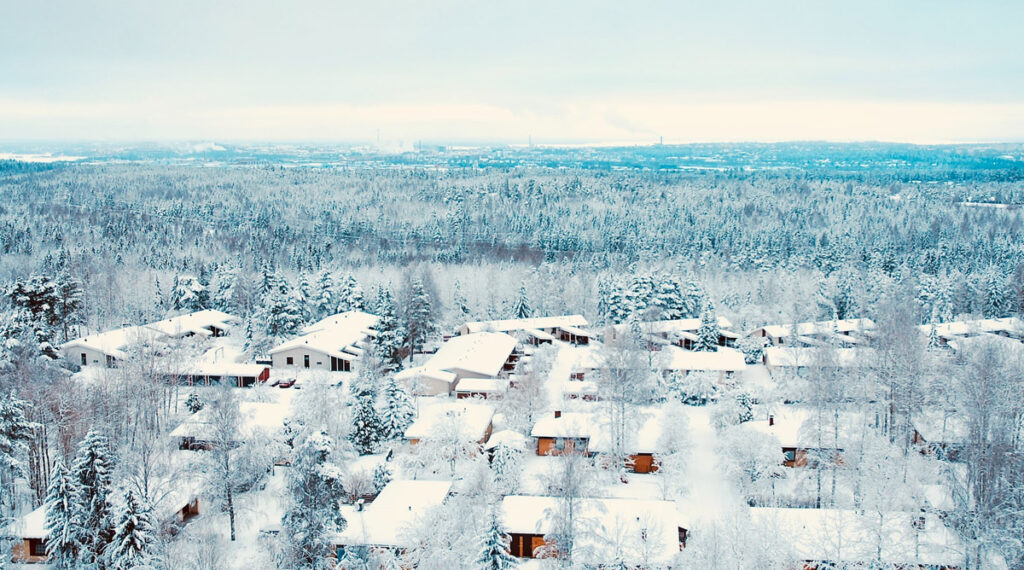Installation of VILPE products in winter

What should be considered when installing VILPE products in winter? And how do outdoor temperature fluctuations affect the performance of the products?
VILPE products can also be installed in winter. However, special attention must be paid to work safety, as the roof, for example, can be slippery during winter.
Here is a checklist for installing VILPE products in winter:
- Before installing the product, remove any dirt, such as snow and ice, from the surrounding area. Make sure that water does not build up around the pass-through.
- Be careful with the clip connections of the products. When making mechanical connections, keep in mind that plastic becomes stiffer in cold temperatures.
The varying weather conditions in the Nordic countries set high demands for the durability of products installed on roofs and walls. VILPE’s product development team tests every outdoor product in a climate chamber, where temperatures range from -70°C to +80°C. For example, pass-throughs undergo freezing and thawing tests to ensure water resistance and the durability of connections.
“The seals of pass-throughs adapt to changes caused by thermal expansion”
According to VILPE’s Research and Development Director, Veli-Pekka Lahti, thermal expansion caused by outdoor temperature fluctuations does not significantly affect the installation or performance of the products, as the components are relatively small.
“For example, the seals of pass-throughs adapt to changes caused by thermal expansion. There are elastic connections between the plastic and roofing materials. Our products are designed to function reliably despite temperature fluctuations,” he explains.
Regarding thermal expansion, Lahti points out that when installing bitumen roofing products, the flange should not be overheated. Otherwise, it may start to warp.
“It is enough for the bitumen to be hot. The flange does not need to be preheated,” Lahti states.
